You’ve just poured your heart and soul into creating an epic blog post your audience will love.
You’ve clicked the “Publish” button…Now what?
It may be tempting to leave it at that and move on to the next project. You’ve got more blogs to write, more topics to cover, and more content to produce, right?
Hold on a minute.
Publishing a blog post and quickly moving on to the next one wastes your efforts. Doing so will minimize the impact of your content and its true potential.
If you want to increase the exposure and circulation of your blog content, implement the following 14 tactics we’ve found to be insanely effective.
1. Reread the final product
It should be an obvious one…but we need to mention it.

Even though we’re pretty thorough with proofreading and diligent about catching spelling/grammar mistakes.
But no matter how meticulous we are, the occasional error still sneaks its way through to publishing.
Sometimes, it’s not even spelling/grammar but formatting or some other issue that slips past me.
Obviously, you should be using spellcheck or even a service such as Grammarly. However, nothing substitutes the proofreading services of a trained professional.
Most pros have a process they follow when proofreading a document.

If proofreading is not your strong suit, here’s what you can do:
- Hire a proofreader from Upwork or Fiverr.
- Ask someone on your team to proofread it for you.
- Once you write an article, wait a day or two before proofreading it. You’re more likely to catch mistakes with fresh eyes.
- Proofread it a second time.
- And a third.
- And maybe even a fourth.
You may wish to hire a copy editor instead of a proofreader.
What’s a copy editor? A copy editor pays more attention to the copy itself, not just grammatical details.
A good copy editor can correct your typos and grammar and improve your content’s style, approach, tone, and accuracy.
It doesn’t matter how much promotion you do (below). If your article is full of errors, you’ll lose credibility.
2. Insert a link to new content on old posts
Internal linking kills two birds with one stone.
First, it encourages readers to explore your site further. Second, it’s helpful for building site architecture and can give you some much-needed SEO juice.
I always try to find previously published content that’s relevant to each new blog post and create a link that points to it.
Why does this even matter?
Internal linking helps you to:
- Improve your site’s structure
- Strengthen the overall authority of your site’s internal pages
- Increase the likelihood of inbound link potential to the new article
- Begin to build the link profile of the new article
- Establish the validity of the new article.
Adding a link to your new article from old posts is easy:
- Open an old article you’ve published.
- Find a relevant spot in the article to create a text link.
- Add the link to the new page.
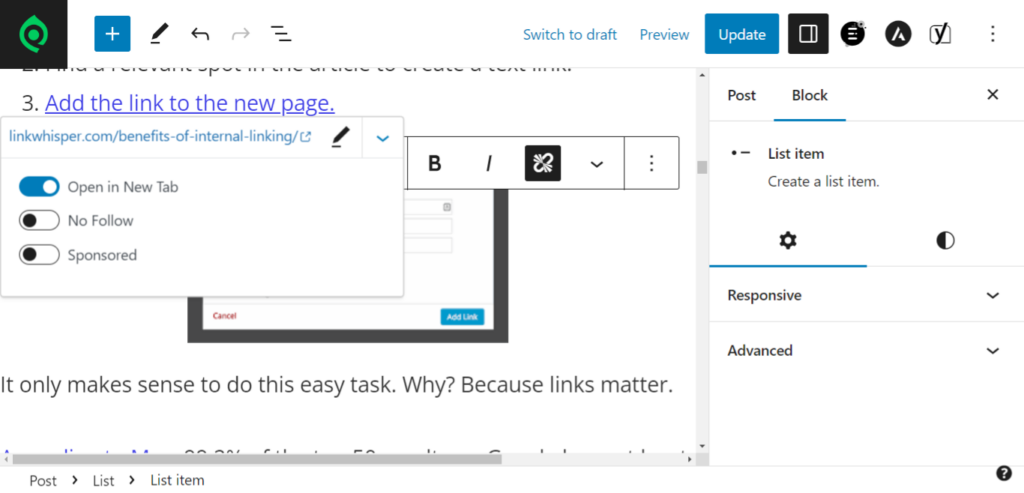
It only makes sense to do this easy task. Why? Because links matter.
According to Moz, 99.2% of the top 50 results on Google have at least one link to the website from some external site.
But it’s not just sitewide links that make a difference. The page itself should have links too. Moz’s research shows a high degree of correlation between a top-ranked page and a page-specific link.

Interlinking pages within your website aren’t considered external links but improve your site’s structure and optimization.
Besides, there’s the freshness factor to consider. When a page acquires new links, it instantly signals relevance to the algorithm, improving its potential in the SERPs.

Adding links should be a top priority shortly after publication.
3. Add a question to spark discussion
Our audience often needs some coaxing to chime in and get the conversation going.
That’s why we like to add an open-ended question at the end of each post.
This encourages our readers to think deeply about a topic and increases their engagement significantly.
We don’t actually expect people to answer the questions. The idea is to spark thinking and conversation.
And thankfully, it works. You guys do share your thoughts with us and other readers.
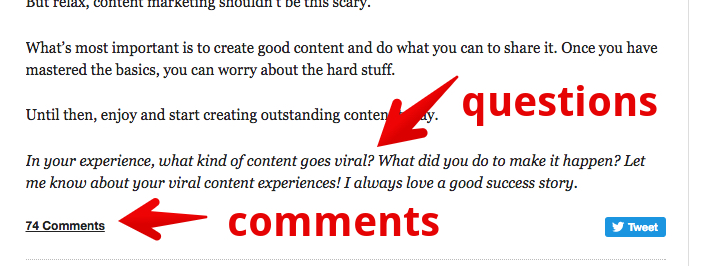
4. Post on Facebook
Duh, right?
But there’s a deeper strategy involved.
When posting an article on Facebook, add a quick sentence or two that captures the essence of a post and explains how others will benefit from reading it. You can pull this directly from the article itself.
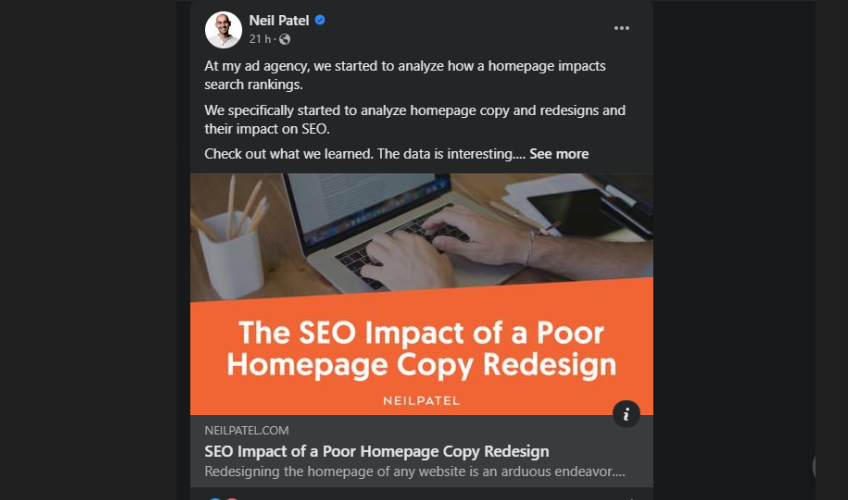
And the image? It’s a must-have.
Facebook posts with photos get more links, shares, and comments. It’s a fact.
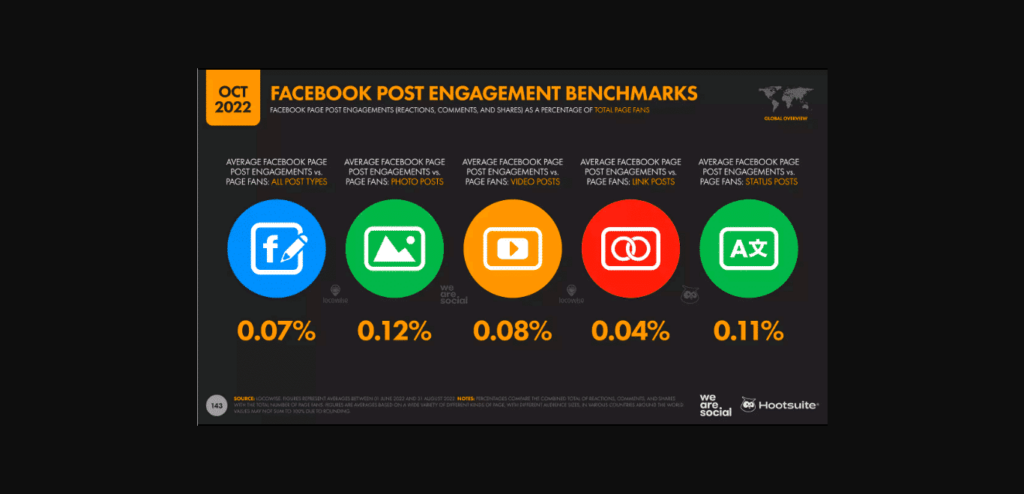
You can combine different techniques to get even more social sizzle from your Facebook post—a photo with your article, plus a question and the link to the article.
You will make an impact if you promote your article with that kind of power.
Notice how a successful page such as Business Insider promotes its articles with various techniques: images, a brief comment, and a link to the article.

5. Post on Twitter
You’re obviously limited in terms of writing a description with 280 characters, although verified accounts can post blog-length single posts now.
The best way to do this is by to write a tweet with a hook that lures your readers.
Tim Denning is a dab hand at this technique and utilises a thread to link to his articles, email list and digital products.
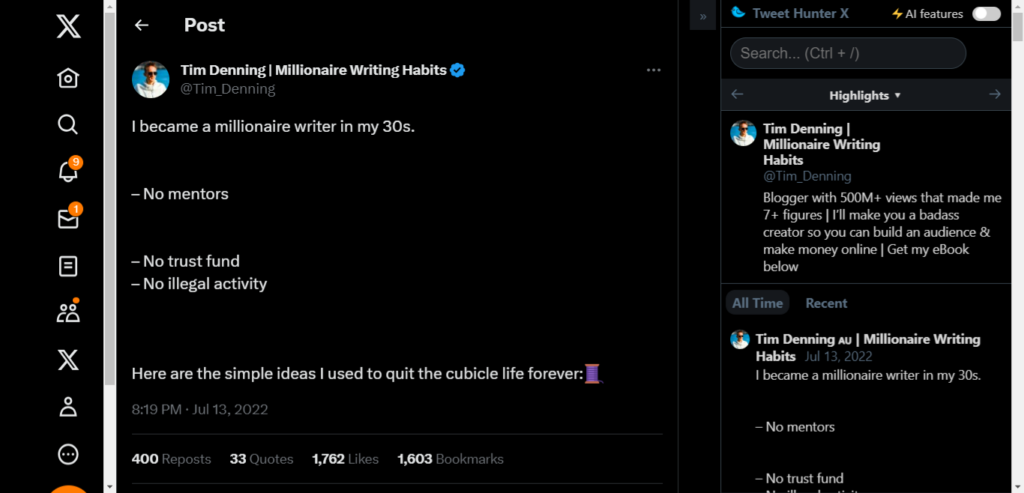
A note on hashtags – this is no longer good etiquette on X (Twitter). A surefire way to aggravate your audience is with lots of blue highlighted text.
6. Post on LinkedIn
LinkedIn is great for highly professional posts and those that are relevant to our industry.
If you’re posting on LinkedIn, you’ll improve your LinkedIn engagement.
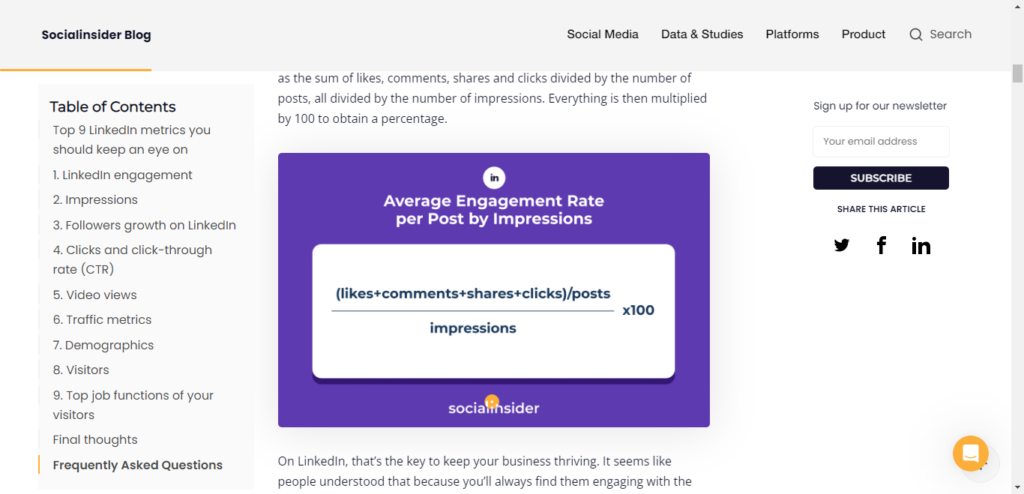
LinkedIn users are among the most plugged in and tuned in to your message.
Use your best judgment regarding the type of content you decide to post on LinkedIn, but by all means, use it!
7. Post on Reddit
You might regard Reddit as the Internet’s home for hipsters and geeks, and you might be right.
But it can also be a traffic gold mine.
Why? Reddit has millions of page views, and its active user base is committed to engagement.
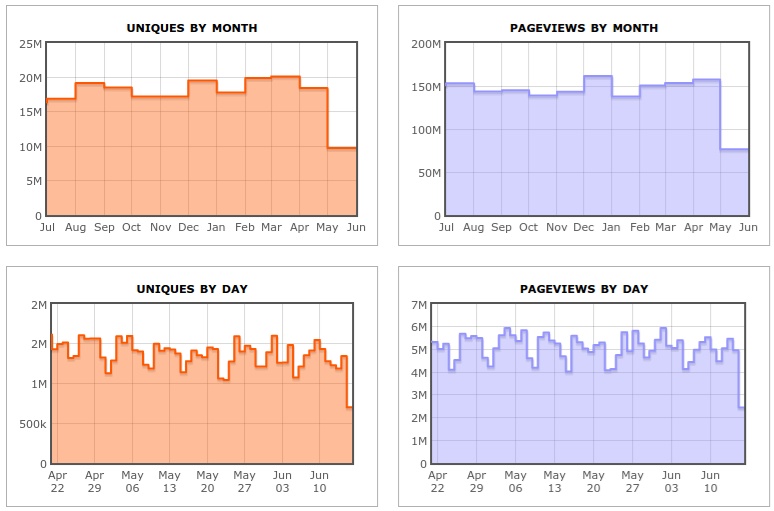
You might have casual users with Facebook and X (Twitter), but there’s something about Reddit’s audience that makes them absolutely addicted to the site!
Reddit users interact on the site using what’s called karma. If that doesn’t mean anything to you, think likes on Facebook, except not really.
Basically, the idea is this: if your post gets lots of karma, more people will see it.
Reddit users don’t hesitate to share their opinions—good or bad—on articles that get shared.
If your content is subpar, you’ll get scoffed at. If it’s good, you can be confident that your new post will get referenced, linked to, and viewed by many people.
8. Share on news aggregators
Sites such as Alltop serve as resources where readers can find a vast amount of content on the topics that interest them.
Bloggers can often share their content on these types of sites, ultimately leading to an influx of quality traffic.
Check out this guide from Techlicious on the best news aggregator sites.
9. Tap into other relevant networks
Whether it’s Pinterest, Tumblr, Instagram, Snapchat, or even Google+ and its uncoolness, share your content on whatever other site(s) you think might benefit you.
The Internet contains Discord and Telegram groups, highly engaged Facebook groups, and other pockets of interactive communities.
Seek out your tribe, build an audience, and provide this network with value through your content.
10. Send to email subscribers
If you’ve got a sizable list of loyal subscribers, you can circulate your content relatively easily.
Just ensure you’re not doing it to the point of being annoying.
I send out a daily email to our subscribers, and it’s the perfect frequency for engagement, growing an audience, and our content goals.
11. Ask a key contact to share it
I would never recommend being the irritating guy who’s always hitting someone up for a favor.
But we would recommend occasionally asking a key contact if they wouldn’t mind sharing a new post with their audience.
Remember to link the relevant to their niche/industry and add value to their audience.
In fact, that’s the most important thing—adding value.
Value works both ways. You should be trying to provide value to the influencer too. Please read this post before emailing all the influencers in your address book. It will give you some helpful tips on how to do it.
12. Respond to comments
Let’s be honest. Getting readers to comment on your content isn’t easy—especially at first when you’re just getting the ball rolling.
Although we usually get quite a few comments on Quick Sprout and NeilPatel.com, it didn’t just happen overnight.
It took a lot of hard work, persistence, and, of course, responding to comments.
Back in the day, our blog posts were pretty lame. But even then, we tried to respond to comments.
Being engaged and responsive is essential for building relationships, creating social proof, and ensuring future engagement.
Even though it can get a little time-consuming if you receive dozens or hundreds of comments, it’s well worth it to respond to each one individually in a timely manner.
13. Comment on other blogs
This is perfect for building rapport and trust if you’re relatively new to the game and are still trying to establish an audience.
Some may think of this tactic as old school, but it definitely gets results.
Why? Because you’re providing value to other people. It’s not just about scammy link-building.
It’s about engaging with real people.

Just be sure you’re leaving valuable comments on relevant blogs.
14. Comment on a commenter’s blog
We would highly recommend that fairly new bloggers take some extra time to reach out to the people commenting on their blogs. Be sure to check out our suggestions for the best blogging platforms.
For example, we suggest identifying a few consistent commenters contributing to the conversation and stopping by their blogs.
From there, we like to find a relevant post that ties into our content and leave a thoughtful comment.
I know this can be a bit time-consuming, but it can really boost your reputation and likability—both of which are integral to your content marketing longevity.
Conclusion
According to Hubspot, “B2B marketers that use blogs receive 67 percent more leads than those that do not.”
You already know that blogging is a best practice. You do it. But then what?
Then you share it.
A blog that churns out content will not get the kind of traffic, interaction, and action it needs. It’s essentially worthless unless you actually do the work of sharing it.
When you go the extra mile and follow these strategies, you can cast a wider net and circulate your content to the deepest recesses of the Internet.
These methods are the secret sauce you need to gain more leads and a loyal following of people who’ll stay hungry for future content. The great thing about intensive sharing is that doing so often attracts prospects who are most likely to convert to your content.
If you’re in the “publish and leave it” habit, it’s time to change. Use these simple, straightforward, and easy methods, and your content will begin to take off.
